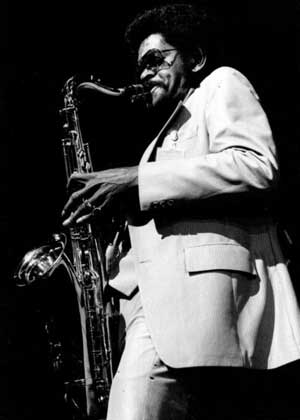Defining Rhythm & Blues

As with so many genres, R & B was originally a 1940s marketing term and referred to dance music marketed ostensibly to a black audience. Before the term was coined, this music was referred to as race music which became a politically incorrect term. R & B grew out of various styles, including boogie woogie and the urban blues of the 20s and 30s.
In the 40s it includes jump blues and blues or riff based swing. R & B is very much a main (or only) ingredient of rock and roll, in fact there are several 40s R & B recordings of the 40s which are contenders for the title of “first rock and roll record”, before the term rock and roll was first used as a genre. In many ways there is very little to differentiate rock and roll from R & B, apart from the marketing concept that the music is no longer primarily or exclusively aimed at a black audience.
Later in the 60s the term became more ambiguous. It would include the new style of blues influenced music pioneered in England by the Beatles and the Rolling Stones. It then became applicable to the soul music of the 60s and funk music of the 70s. Then again in the 90s it took on a whole new meaning. However the players and the music I want to highlight here are from the 40s and 50s, what I call the classic or golden era of R&B.
What differentiates R & B and jump blues from much of the swing jazz of the era could be an emphasis on raucous showmanship, whether it’s using the extreme ends of the saxophone range, ie screaming (altissimo) and honking, or bar walking. However many of the players we think of as gutbucket screamers and honkers could also turn out a lush ballad or tasty bebop solo.
Will I be able to play Rhythm & Blues saxophone?
I really didn’t want to define rhythm & blues but I was sort of forced to do it when putting the vast page of R&B players together. Not being able to read music doesn’t make it any more or less likely you can play rhythm & blues. Neither does being down on your luck and having an empty bed. But it probably helps to have a broad experience of life and its ups and downs.
One important thing though is that if you do have a phenomenal technique and knowledge of music theory, you may need to temporarily sideline it to be a good rhythm & blues saxophonist. I think of this as “putting on a different hat”. It doesn’t matter if you are classically trained musician, the blues is still something you can learn.
You may notice from listening to some of the great rhythm & blues and rock and roll players such as King Curtis, Lee Allen and Sam Taylor is the ability to express as much or more with one note as many jazz musicians can with a hundred. This is as much to do with an intangible “attitude” as it is with musicianship and knowledge of the style. It is very difficult to teach, but I believe it’s possible to learn it.
How do I play blues on the saxophone?
The quickest way to play improvised blues on the sax is learn the minor blues scale and just play it. This works best in fragments (ie phrases) rather just running up and down the scale. This will get you through a 12 bar chorus adequately. However as soon as possible after that learn how to use melodic phrases, riffs etc instead of relying on scales.
Listen to what you play as you play it, think of those fragments as language: words, sentences, questions, answers. Also explore the tone and sound effects you can get from your instrument: shouting, whispering, crying, moaning, laughing. One long soulful bending note can take up several bars of a blues solo.
Listen to, learn and transcribe improvised solos – start with simple ones that aren’t too challenging. Don’t just stick to saxophone players – listen to blues and jazz singers – try to phrase the way they do.
The real secret to playing blues
To play blues properly, it helps to experience the blues. This can’t be taught and it’s not even something you can or would normally choose to experience. The next best thing is to listen to a lot of blues and rhythm & blues. The saxophone does not feature in early (country) blues, which is predominantly a guitar and vocal style, but became very important in later urban developments: R&B, jump blues, jump jive etc.
As with blues guitar styles, it’s useful to think “vocally” on the saxophone, so it’s very useful to master a wide range of expression, especially the note bending, growling
and other effects.
There are plenty of useful blues licks, riffs, phrases and chords on the jazz part of this site (see below). I’ll be adding some specifically for the saxophone very soon. It is useful to learn the pentatonic and blues scales, both major and minor, but remember these are just a means towards an end.
It’s not good to use theme too much in their scale form, but best to use them as a reference for inventing melodic fragments, riffs and licks from which to build a focussed, articulate and truly emotional blues solo.
There are loads of blues licks and scales on these pages:
Blues Licks and Phrases
12 Bar Blues Chords
There are plenty of useful blues techniques in the effects section of the saxophone pages, and some blues theory, licks and scales on the Jazz, Rock & Blues pages (follow the links from the main menu at the top of the page).
Pete Thomas has toured with legendary blues artists Jimmy Witherspoon and Fats Domino.
